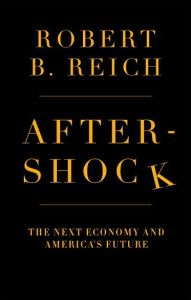Join getAbstract to access the summary!

Join getAbstract to access the summary!
Robert B. Reich
Aftershock
The Next Economy and America's Future
Knopf, 2010
What's inside?
The rich get richer, the poor get poorer, but what about the middle class? Find out why they’re the linchpin to US economic recovery.
Recommendation
Politicians and pundits like to blame Americans’ excessive debt for plunging the economy into recession in 2008. But middle-class earners had a good reason for borrowing: Their incomes have dropped since 1980, during a period when the US economy’s gains increasingly went to the wealthy. According to former US Secretary of Labor Robert B. Reich, the only way out of the doldrums now is to redress that imbalance and help the middle class resume its role powering the economy. In this book, Reich explores the dire consequences of failing to get workers back to work. Without seeming particularly worried about stirring controversy, he offers his suggestions for restoring the “basic bargain” of shared prosperity: People work and the government supports good jobs backed by a “safety net” of public services. getAbstract recommends Reich’s sobering review to those studying ideas about what’s broken and how to fix it.
Summary
About the Author
Robert B. Reich, a professor of public policy at the University of California, Berkeley, served in three presidential administrations, most recently as Secretary of Labor under Bill Clinton.


















Comment on this summary